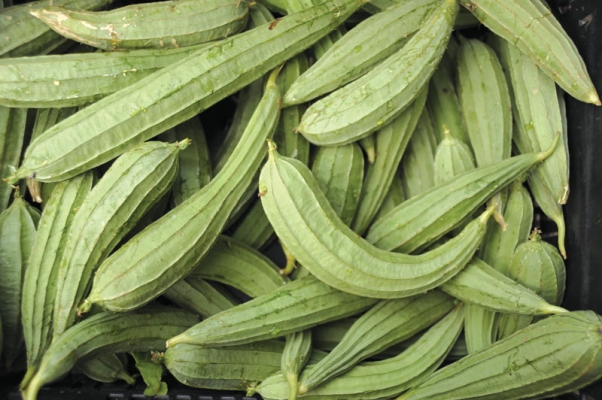PusaNasdar: Mid season variety. Suitable for kharif season.
Swarna Manjari: Fruits are medium size, green color with soft pulp and less fiber. It is tolerant to powdery mildew. Ready for first harvest in 65-70days after sowing. Gives average yield of 70-80qtl/acre.
CO 1: Light green, long fruits with average weight of 300gm. Gives average yield of 55qtl/acre.
Panvel local variety: High yielding variety, popular among farmers. Fruit are attractive with good taste.
PusaChikani, PusaSuchita, KokanHarita
Other state varieties:
PusaNutan: Fruits are attractive straight, green color. It is suitable for summer as well as kharif sowing. Ready to harvest in 45-60days. Gives average yield of 65qtl/acre.
Swarna Uphar: Ready for first harvest in 65-70days after sowing. Gives average yield of 80-120qtl/acre.
Hisar Kalitori: Suitable for rainfed areas. Fruits are straight, long and thin. Tolerant to powdery mildew. Gives average yield of 30-40qtl/acre.
Pant toria: Ready for first harvest in 65days after sowing. Gives average yield of 40qtl/acre.
Gujrat Anand Ridge Gourd 1: Medium size, green color fruits. It is resistant to mosaic and downey mildew. Gives average yield of 60qtl/acre.
CO 2: Long, greenish and fleshy fruits. Gives average yield of 100qtl/acre.
PKM 1: Long, dark green fruits. Gives average yield of 110qtl/acre.







